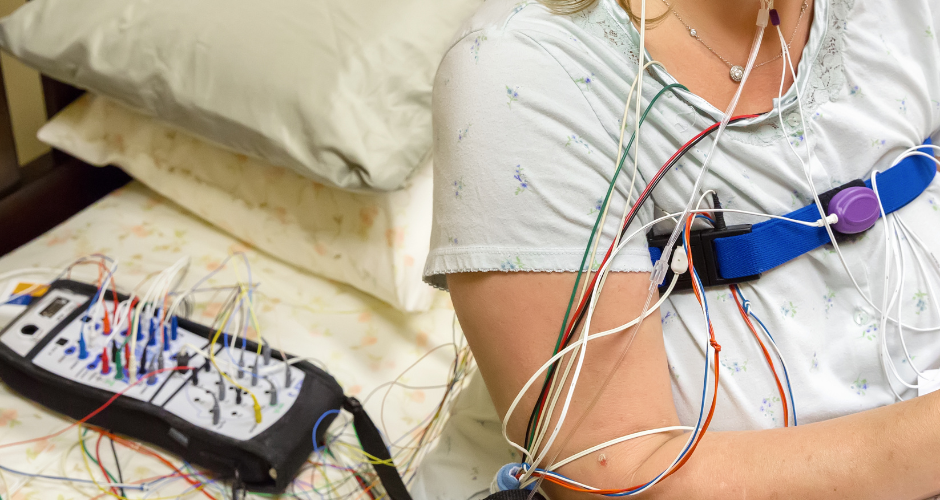Lack of good sleep is more than a yawn-and-drag-through-the-day problem. It can also increase your risk for obesity, heart disease, infections and more.
Sleep tests are common.
If you’re one of more than 70 million Americans who toss and turn or snore through the night, you may want to consider getting a sleep study. To make it more convenient, CHI St. Alexius Health now offers in-home and in-lab sleep studies.
Think of it as a test you can sleep through. Instead of a grade, you get the information you need to get better sleep, so you can feel better from head to toe.
The first step is seeing your doctor to determine if you may have a sleep disorder such as obstructive sleep apnea or another condition like narcolepsy, which is sudden daytime attacks of sleep. If your doctor suspects sleep apnea, a home sleep test may be recommended. If another sleep disorder is suspected, an in-lab test may be the recommendation.
In-lab sleep tests vs. in home sleep tests.
In-Home Sleep Test
An In-Home Sleep Test monitors breathing for sleep apnea by measuring breathing patterns, pauses or absence of breathing, for example. It does not determine how long you’re in deep sleep.
This test does offer the convenience of sleeping in your own bed. This can also provide a more accurate reading of how you regularly sleep. What you have to do:
- Place a small probe over your finger that measures oxygen levels.
- Wear a mask similar to an oxygen mask with tubes that go into the ends of your nostrils.
- Place sensors on your abdomen and chest to measure how they rise and fall during sleep.
After a night of sleep, your results will be reviewed by a sleep technologist and sent to your physician.
In-Lab Sleep Test
A standard in-lab sleep study (polysomnogram) records information – such as muscle tone, EEG activity and Rapid Eye Movement (REM) – which allows a sleep physician to evaluate the sleep stages and their sequence during the night. It also records heart rate, oxygen saturation and respiratory effort and airflow for any breathing abnormalities. In addition, limb moments and talking or unusual behavior are documented. Tips for preparing for in-lab sleep test:
Do's and don'ts of in-lab sleep tests.
- Don’t do your hair. Avoid hair sprays, oils, gels, etc.
- Avoid alcohol and limit caffeine to one cup on the day of the study. No caffeine after 2 p.m.
- Pack as you would for a night’s stay at a hotel. Items you can bring:
- Books
- Smartphone with earbuds
- Snack (if you’re used to having one at bedtime)
- Favorite pillow (if you have one)
You are not expected to sleep as soundly as you do at home. You may take longer to fall asleep and you may find the monitoring devices distracting. This doesn’t interfere with the accuracy of the test. Your results will be reviewed and sent to your physician.
Whether you have it at home or in a lab, a sleep test can set you on a path to better sleep and ultimately better health for years to come. Call your primary care clinic today.





